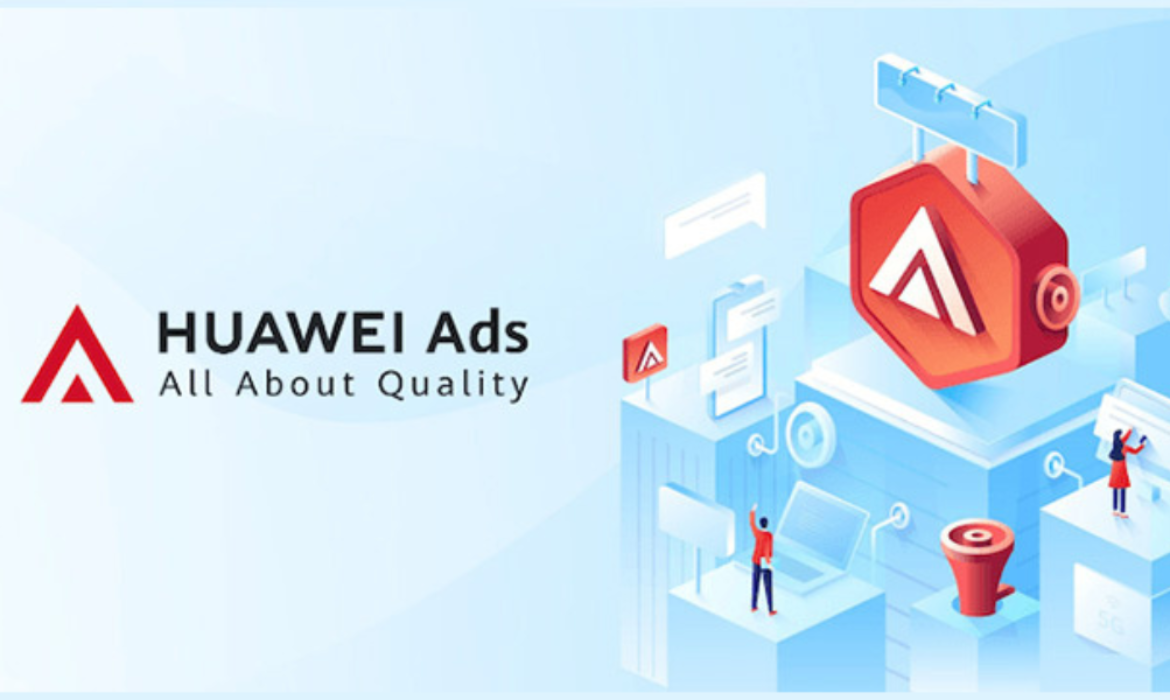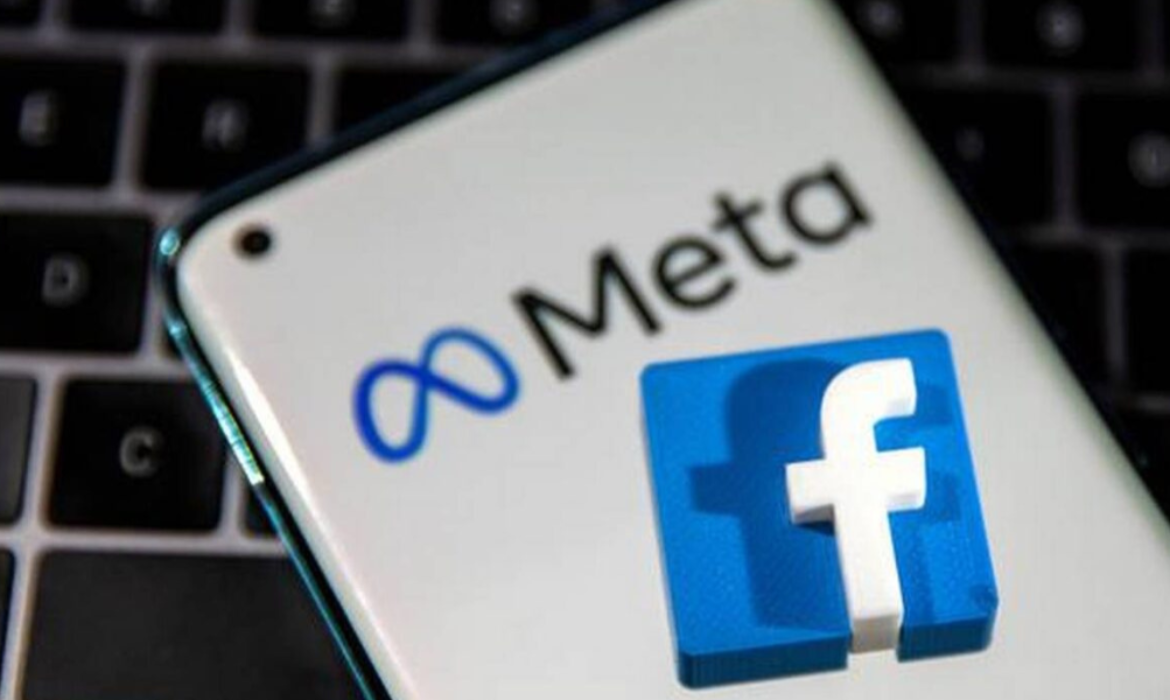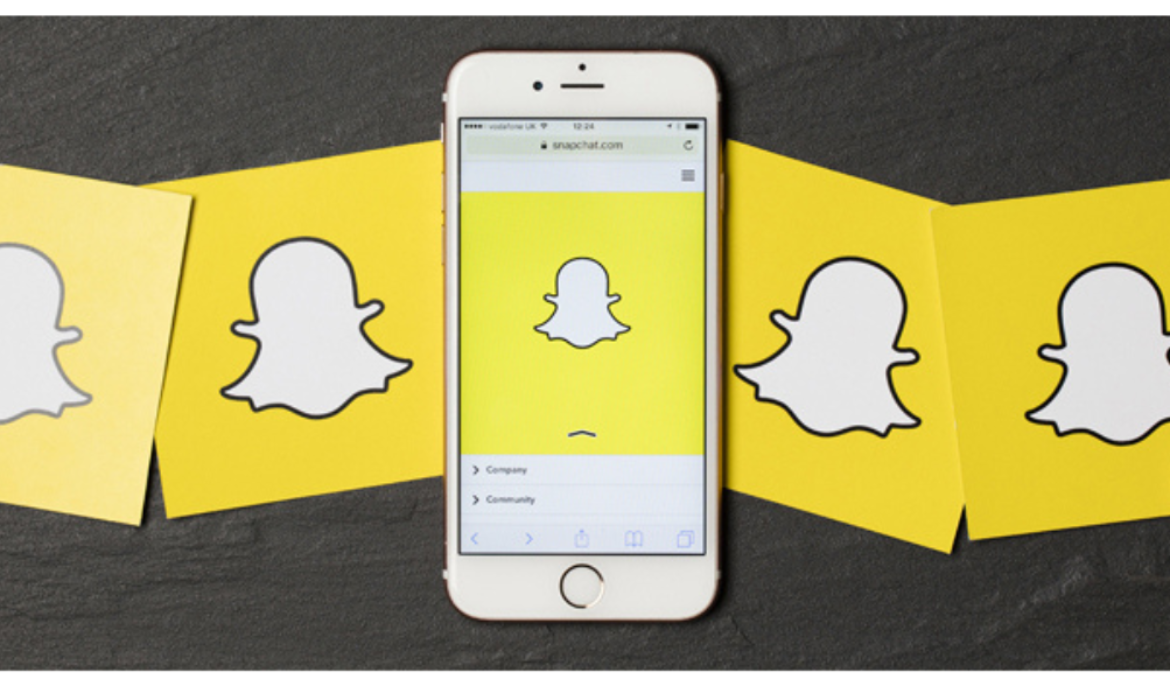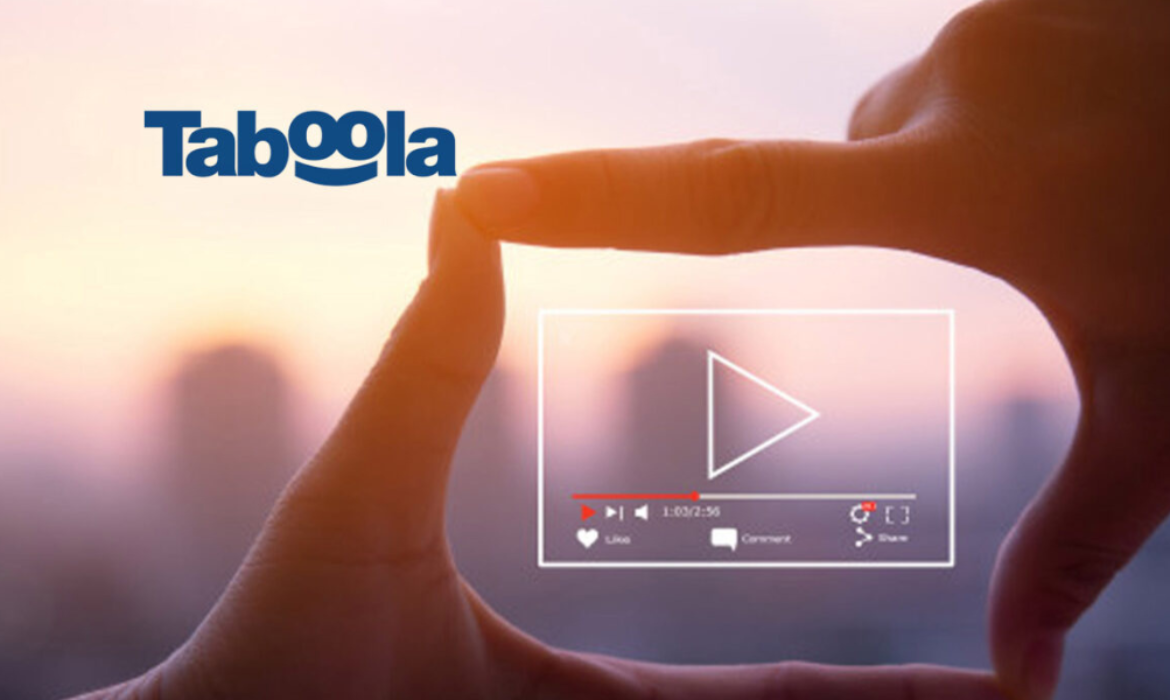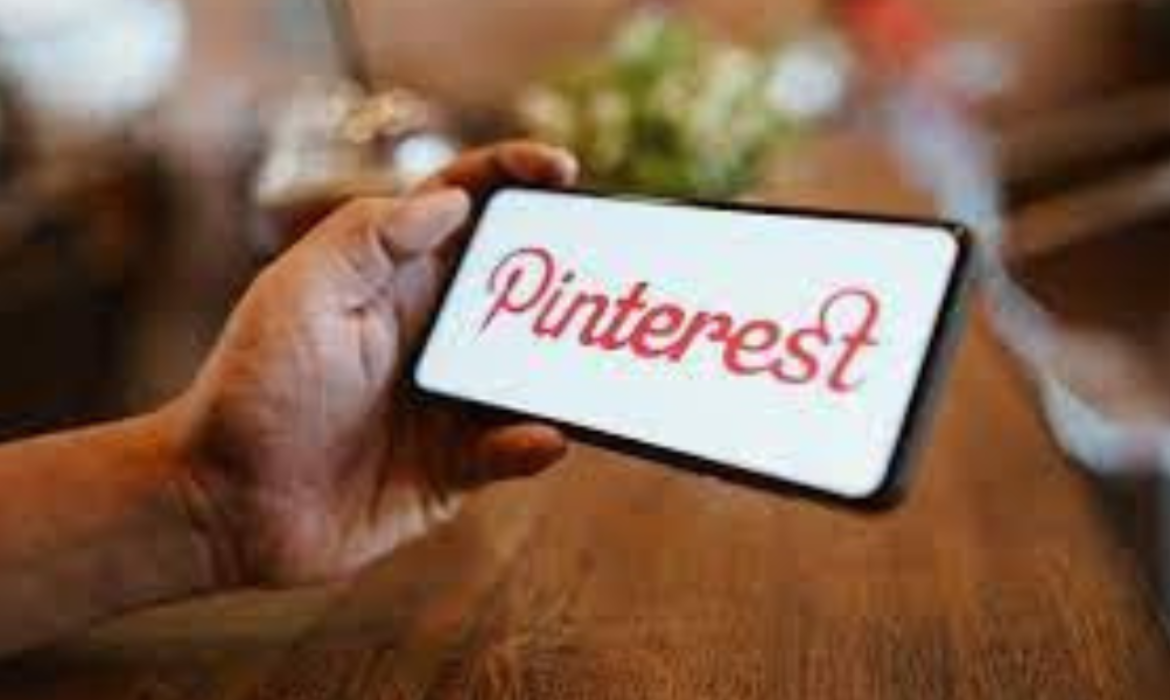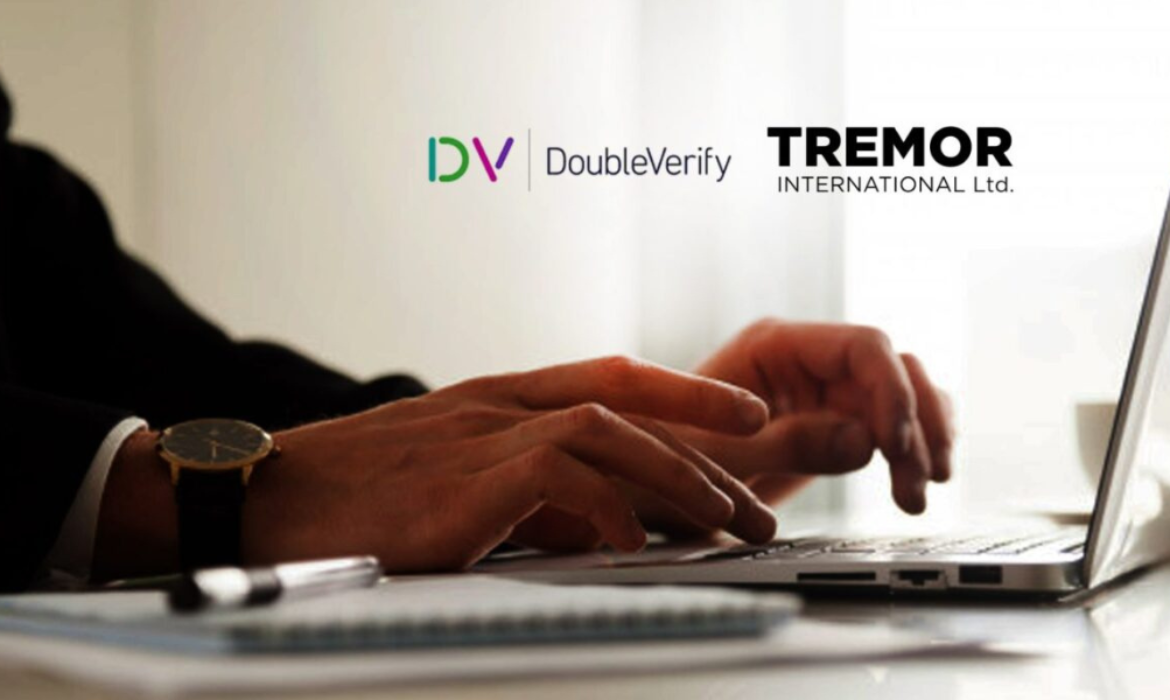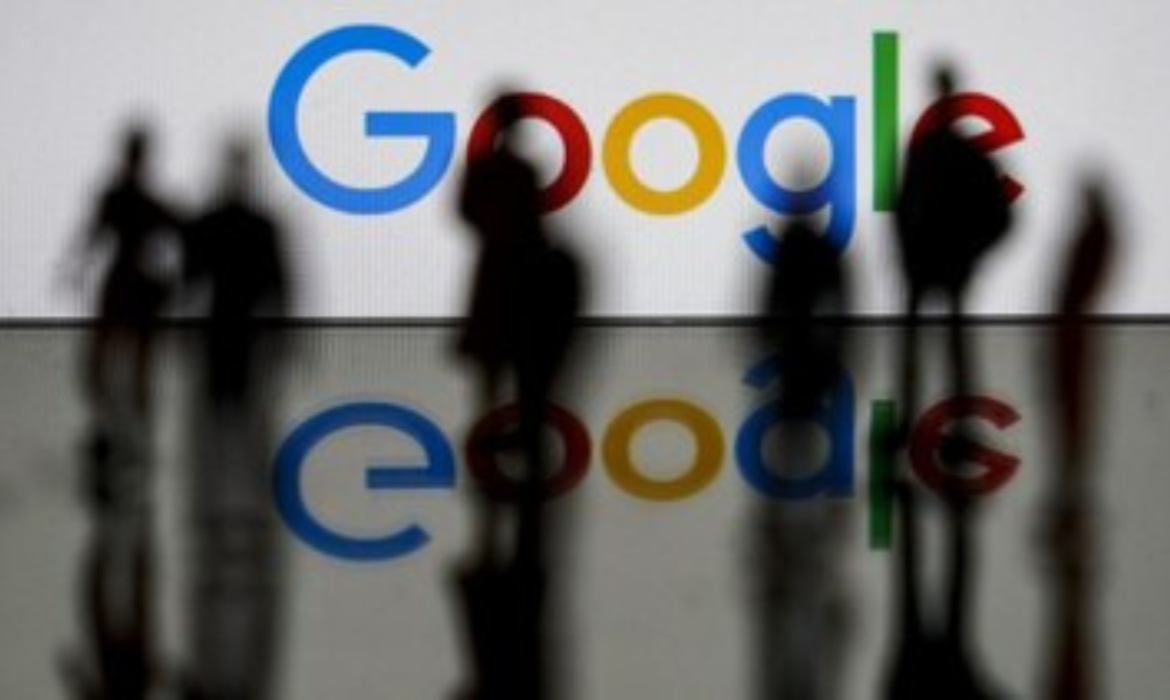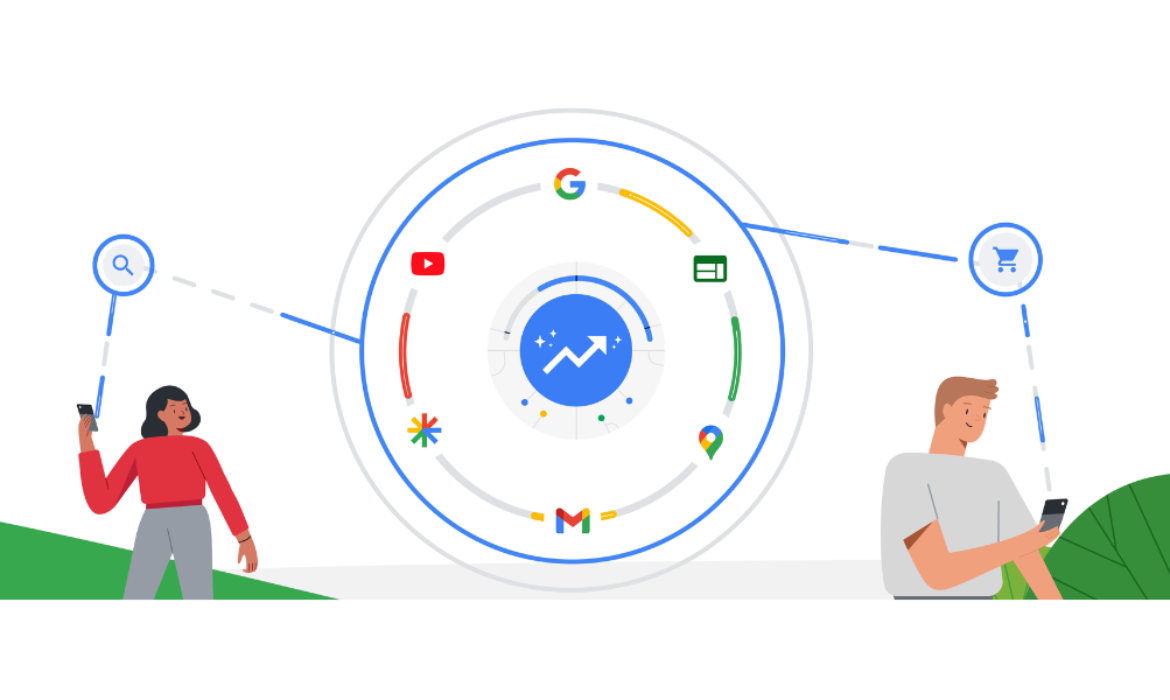Huawei Ads announces six new additions to Certified Partners Program
The programmatic advertising platform Huawei Ads announced six new partners to its Certified Partners program. A number of leading agencies such as LIVEmena in Saudi Arabia, Home of Performance in UAE, ARQQA in Egypt, VEVE by Affinity, Ventes Avenues in India, and OMD Pakistan have joined the alliance.
Adam Xiao, Managing Director of Huawei Mobile Services in the Middle East and Africa, Huawei Consumer Business Group, said,
“We consider our partner ecosystem as an extension of our own team, and we are delighted to announce that we are expanding the HUAWEI Ads Partner Program to on-board six more leading agencies as ‘Certified Partners’ from the Middle East, Africa and India region.”
He further added,
“This milestone underpins our commitment to enhance our services and provide our customers and partners with support to place advertisements in the HUAWEI Ads ecosystem effectively. We look forward to supporting our partners to scale new heights with their campaigns.”
Interesting Read: Trade Desk Partners With Choueiri Group For Better Programmatic Access In MENA
How Can It Help Brands?
Brands can reach Huawei’s vast untapped global user base through “Certified Partners” who can provide insight and advice to optimize their campaigns’ creative and performance aspects.
Moreover, HUAWEI Ads offers developers the ability to integrate multiple kits with AppGallery and monetize by displaying ads. The advertising platform supports many ad formats, including native, rewarded, banner, interstitial, splash, and roll, which increases revenue for developers.
With more than 1.2 billion daily advertising requests, HUAWEI Ads has introduced seven flagship apps and more than 30,000 third-party apps since the global inauguration. The advertising platform is available in 170 countries and has over 700 million monthly active users, allowing developers to increase in-app revenue and benefit from advertising through a fully connected world.
Huawei Ads is becoming an increasingly important consideration for brands as it continues to add new partners. As a result of the expansion of its partner program, HUAWEI Ads will be able to capitalize on that potential and become a key player in the adtech sector.
Interesting Read: JGroup and Blis To Partner For Exclusive Location-Based Advertising In MENA
Facebook Provides Advertisers More Safety Controls In The News Feed
Meta formerly known as Facebook is enabling brands with more control over the placement of their ads in the NewsFeed. In a blog post, it said,
“We’re introducing a number of controls designed to give people and businesses the ability to tailor their News Feed experience.”
New News Feed Controls Added For Advertisers
As part of its NewsFeed updates, the company unveiled a brand suitability verification tool for advertisers. Additionally, it expanded the topic exclusion controls to a limited number of advertisers that advertise in English.
The controls will be in the “Ads Preferences“ settings tab, which will allow advertisers to select a topic to help define the way ads appear on Facebook, including in News Feed. Advertisers can select three topic categories – News and Politics, Social Issues, and Crime & Tragedy. Advertisers who have selected one or more topics will not see their ads in the News Feed of people with recent engagements on those topics.
Interesting Read: Facebook Changes Counting Policy For Ad Planning And Measurement
In early testing, Meta found that advertisers who excluded the News and Politics categories were able to avoid adjacency 94% of the time. Tragedies and conflicts (99%) and debated social issues (95%) saw similar results. The company said,
“From our conversations with the industry, we know that this solution may not solve the needs of every advertiser and that some advertisers are looking for content-level granularity.”
With this product, Meta intends to bridge the gap between what they offer today and hope to offer in the future – content-based controls. It is exploring and testing a new content-based suitability control that will be designed to address concerns advertisers have about their ads appearing in Facebook and Instagram feeds next to specific topics based on their preferences.
“We aim to design our exploration in line with the Global Alliance for Responsible Media (GARM) Suitability Framework.”
According to the blog post, Meta expects to launch a new control in 2022 and to start updating them in Q1.
Interesting Read: Facebook Plans a Privacy-Focused Approach to Rebuilt Its Ad System
Third-Party Collaboration For Placement Verification
Facebook plans to work with third-party brand safety partners before year-end to “develop a solution to verify whether content adjacent to an ad in News Feed aligns with a brand’s suitability preferences.”
New And Customized News Feed Controls For Users
Meta allows users to have more control over what shows up in NewsFeeds, allowing them to minimize the content that they see from friends, relatives, groups, and pages. Also, using the unfollow, snooze, reconnect and disconnect buttons will be easier. Eventually, Meta plans to test the features globally on a small percentage of users.
Also Read: Facebook Failed To Detect A Bug In Its Conversion Tool For A Year!
Snapchat Advertising: New Multi-format Ad Delivery To Increase Reach
Snapchat globally rolls out an industry-first offering, ‘Multi-format delivery’, enabling advertisers to buy multiple ad formats in a single integrated ad set. It allows advertisers to optimize their campaigns toward their key objectives.
Multi-Format delivery supports all types of video ads, including Collection Ads, Commercials, and Snap Ads, and Story Ads. Snap plans on introducing self-serve augmented reality formats by the second quarter of 2022 for multi-format delivery. By doing so, it will help Snap introduce augmented reality advertising to more marketers.
Interesting Read: Mediabrands and Snap Inc Collaborates For A Mobile Video Measurement
Embrace The Machine Learning System
This multi-format delivery option is intended to help advertisers be more flexible with campaign setup, so Snap’s Auctions can handle the optimization-related work. As part of a set, Snap determines the best inventory to deliver across all formats.
As quoted by Adexchanger, Peter Naylor, Snap VP of sales for America said,
“When we allow machine learning to do its thing, we’re opening the aperture of possible inventory where an ad can run. It might be somewhere a brand hadn’t even conceived of before.”
Advertisers should not resist giving up manual control over the bidding and embrace the system to see the outcome for effective pricing.
Interesting Read: Snapchat Sees a 20% Plummet In Revenue Due To Apple’s Privacy Changes!
How Does It Work?
Within Snap Ads’ set up, a new ‘Multiple Formats Ad Set’ option will enable advertisers to bundle various creative options for placement across Snap’s suite of apps. It will enable advertisers to evaluate the efficiency of each format and assess its contribution to the success of their campaign.

Image Credit: Snap Inc

Image Credit: Snap Inc
A Snap ad set with multi-format delivery closely resembles a Facebook ad set: a collection of ads with similar settings for how, when, and where to show them. It will bring something new to the table, though when Snap will begin offering AR formats ad sets next year.
As reported by Adexchanger, Naylor said,
“This is going to unlock augmented reality for advertisers and show them that they can use it to accelerate their results in combination with everything else.”
He further added,
“Once we let machine learning reveal where the best inventory is against their goals, target or bids, they can focus more on the creative itself.”
Also Read: The Ultimate A-Z Glossary Of Digital Advertising!
Taboola Inks A Multiyear Deal With Getty Images For Video Content
Taboola, a global leader in serving recommendations for the open web, announced a multi-year agreement with Getty Images, a global leader in visual communication.
Taboola and Getty Images Agreement: What Is The Deal About?
– By partnering with Getty Images, Taboola’s more than 14,000 advertisers have access to Getty Images’ collection of premium video content through Taboola Ads media buying platform.
– Besides building on the five-year relationship, this will allow Taboola’s advertisers to integrate Getty Images’ diverse video library into their campaigns.
– Taboola advertisers can seamlessly have access to high-quality videos from Getty Images for use in campaigns that reach more than 500 million active daily users on the world’s top publishers.
– This partnership enables Taboola’s diverse formats such as High Impact Video and Motion Ads, to offer advertisers of all sizes the opportunity to execute campaigns.
Utilizing these formats and Taboola’s long-standing partnerships with leading websites means that advertisers can be sure that their ads will be enhanced every time they are viewed with high-quality video and imagery.
Interesting Read: Taboola And Double Verify Partners For Brand Safety
That’s What They Said
Adam Singolda, CEO and founder, Taboola said the partnership with Getty Images will make video advertising seamless for advertisers of all sizes.
“The ability to create custom video content for campaigns with a partner like Getty Images means advertisers can ramp quickly and get their campaigns in front of our large audience of publishers and their readers.”
Nick Unsworth, VP of Business Development said they are pleased to expand the long-term partnership with Taboola.
“Video is central to how we communicate and engage digitally and with our high quality visual content, advertisers across a broad set of industries and categories can find the right image or video that will enhance their campaign and speak to their target audience.”
Interesting Read: Advertising On Taboola: An Efficient Tool For Advertisers
Quick Guide: Top Programmatic Trends To Keep An Eye On In 2021
Digitalization has advanced rapidly due to COVID19 and 2021 has seen a major increase. This has helped Programmatic trends gain popularity due to their efficiencies and capabilities. But keeping up with the pace of change isn’t always easy.
Last week, I was talking to a friend about streaming services thanks to the home-stay.
And she suggested many names of streaming platforms like Apple TV+, Disney+, and Amazon Prime.
And I was amazed!
New streaming services, social media platforms, and technology seem to emerge every day. And then there has been a hike in the most important piece of the advertising puzzle – “programmatic”. Programmatic advertising is rapidly growing as eMarketer’s forecast, suggests more than 88.2% of the U.S display ads will be purchased via programmatic by 2022.
Programmatic Trends 2021 That Have Our Eyes and Ears
We have listed the programmatic trends 2021 that will factor heavily into your ad spending strategy and targeting. They will be shaping the adtech industry in the coming times. There is tremendous growth within connected TV (CTV), podcasts, DOOH, and other emerging channels. Programmatic advertising is full of opportunities.
Programmatic Trend #1: Data and Cookie Deprecation
Privacy was one of the most notable programmatic trends in 2020 and still, it is. The focus is on consent-driven first-party data and cookies are set to bid farewell in 2022. Marketers, publishers & adtech stakeholders can now take the advantage of the time to become increasingly self-reliant in setting up their own CDPs, DMPs, and unique audience identifiers.

Image Credit: IAB Australia
Interesting Read: Impact of Delay in Deprecation Of Cookies By Google On Adtech
Which exact models are expected to arrive?
-Data management platforms will re-engineer their algorithms to collect consented, personally identifiable data, and move them to programmatic platforms without defining anonymous segments.
-Another model proposed by Google is Federated Learning of Cohorts(FLoC). Cohort solutions process local data using machine learning algorithms that run on the device. Anonymous groups of people based on behavior and interests are targeted.
-Shared User ID Solutions is another model where publishers collect 1st party cookies, forward them through API to providers. With user consent, the ID provider creates an anonymous ID to be shared with brands and adtech companies. Publishers will store it in their first-party cookies.
Interested Read: End Of Third-Party Cookies, What Is There For Marketers: Takeaway!
Programmatic Trend #2: The Unmistakable Power Of OTT, Connected TV(CTV), And Mobile
Streaming services and Internet-enabled TV have opened up new opportunities for publishers, advertisers, and AdTech companies. Connected TV, OTT, and mobile-friendly ad formats are also a rapidly growing programmatic trend of 2022. Who knew that “Netflix and chill” would become so mainstream whereas 1 in 3 Americans cut the cord and banish the cable to a dump.
A Comscore report suggests that over-the-top (OTT) streaming services added 20 million households in the past 4 years. But here is the real kicker – CTV reports that OTT ads have an average completion rate of 98% as viewers have to watch the ads till the end.
Connected TV(CTV) usage increases and continues to be a big piece of overall marketing spend in the U.S. CTV ads are persuasive, engaging, well-targeted, and have a high completion rate. eMarketer study estimates that CTV ad spending will reach at least $14 billion by 2023. It is typical in advertising, where high competition drives the price of advertising down. However, the outcome is yet to be seen.

Image Credit: ClearCode
The advertisers’ favorite big screen is now also dominated by mobile small screens. From watching Netflix to browsing YouTube videos on smartphones or tablets, it is an absolute favorite choice of consumers. No wonder, mobile accounted for 68% of the digital advertising spend as it is the most easily accessible device to browse the web or watch videos anytime.
Programmatic Trend #3: The Most Compelling Audio Format – Podcast
The podcast is the radio of Millennials and Gen-Z. They have become a popular choice among digital consumers and an important part of omnichannel digital advertising strategies. The below statistics are staggering:
- Total U.S. podcast listeners are expected to increase by 20 million over the next two years, surpassing 160 million in 2023
- The average number of weekly podcast listeners in 2020 was 68 million people
- U.S programmatic podcast ad spending will double and reach $106.5 million by 2022
There is a real opportunity here, especially since only 4% of total U.S. podcast ad spending was programmatic. Podcast ads can either be host read ads or dynamically inserted ads. The former is seamless and non-invasive.

Image Credit: Writers Block Dive
Another data goldmine is a voice assistant in programmatic advertising. The use of voice assistants like Siri, Alexa, and others can help marketers spot trends using programmatic advertising.
Programmatic Trend #4: DOOH Advertising
Digital Out-of-Home(DOOH) is prominent in programmatic advertising and will be one of the must-haves in programmatic trends 2022. The two primary reasons are: it allows marketers to utilize creative content as well as User Generated Content through their brand’s social media. Secondly, DOOH can support omnichannel marketing using location data to target ads, and direct prospects to the brand’s nearest sales point.
In 2021, DOOH will likely start its slow yet steady recovery. When COVID-19 hit full force, travel was severely impacted but it seems people got tired of lockdown policies and are less prone to stay at home. A study forecasts that the global market for Digital OOH will reach US$35.1 Billion by 2027, growing at a CAGR of 9.3%.
The number of supply-side platforms that integrate with DOOH is relatively low. As the segment, direct forms of media buying remain more prevalent than traditional online advertising, which continues to shift toward programmatic. However, the SSP market for DOOH is picking up steam, so companies with DSPs and access to custom supply partners can benefit from early programmatic DOOH adoption.
Interesting Read: All You Need To Know About The Rise Of DOOH Advertising
Programmatic Trend #5: AI And Machine Learning Is Golden
One of the top programmatic trends of 2021 is automation. 41% of marketers say that AI and machine learning have the greatest contribution to their revenue growth and performance.

Image Credit: Elearning Infographics
COVID-19 and the data revolution have greatly accelerated the use of artificial intelligence (AI) and machine learning in programmatic advertising, and this trend is likely to continue in 2022. AI and machine learning will place programmatic ads based on criteria and relevance. Besides reducing inventory wastage, it also creates a win-win system for both publishers and advertisers. In the new trend, cohorts will be used to gain insight into how new users act on the internet and when the right time is to target them. As a result, advertisers will be able to improve their targeting and bidding as well as increase their ROI.
Interested Read: 5 Programmatic Advertising Case Studies That Yielded Exponential Results
Programmatic Trend #6: 5G Boost For Programmatic
5G internet will significantly bolster programmatic advertising. With 100 times more bandwidth than 4G, it will make processing power-intensive programmatic a mainstream form of advertising. The display ads will load faster and advertisers can reach more channels at a higher speed. Additionally, 5G will drive the growth of in-app and in-game advertising, as well as ads in wearables and smart home devices.
It will complement other technologies and mediums, such as augmented reality ads, virtual reality without the heavy headsets, and innovative new digital outdoor advertising. It is predicted that 5 G-based adtech to expand to 1.4 billion users by 2024. This means programmatic advertising will cater huge audience to run sharper and interactive ads without lags around mediums.
Programmatic Trend #7: Hyper Relevance It Is!
Hyper Relevance over Hyper-Personalization is the new programmatic trend. Relevance must be the determining factor when targeting a customer instead of targeting and adjusting revenue based on needs. This can be achieved through programmatic targeting. Advertisers and publishers can serve ads more effectively through this method without collecting invasive data that users must fill out.
Geofencing on mobile is a classic example of hyper-relevant advertising combined with a smart choice of device targeting. It focuses on highly localized areas to provide relevant ads even if personal information is not available. Geofencing gives more importance to location as it plays a crucial factor in purchase decision-making.
Interesting Read: The Ultimate A-Z Glossary Of Digital Advertising!
Summing Up
Programmatic is expanding to new media formats, like CTV, DOOH, and Digital Audio. Meanwhile, the adtech industry is also facing privacy and data collection issues. Hence, new regulations and transformation to a cookie-less world are a requisite.
The programmatic trends mentioned can be a part of your advertising strategy irrespective of its complexities. Programmatic advertising will gain more prominence in the future and this is the right time to jump the bandwagon to reap the benefits of the innovative technologies.
Adtech Acquisition: Double Verify To Acquire Open Slate For $150 Million
Double Verify (DV), the digital media measurement, data, and analytics platform, has announced to acquire OpenSlate, a pre-campaign contextual targeting platform. It enables brands to align advertising with suitable or contextually relevant content across social video and CTV. The $150 million deal is in cash and stock transaction that is expected to close this quarter. Open Slate provides solutions that help to understand the nature and quality of ad-supported content on video-driven platforms like Facebook, TikTok, and YouTube. It operates across 37 international markets and supports large global brands and agencies.
Mark Zagorski, DoubleVerify CEO stated that the company’s mission is to make digital advertising stronger, safer, and more secure to give brands clarity and confidence in their digital investments,
“Our strategy in support of this mission is to verify everywhere – across channels, formats, platforms and geographies. The combination with OpenSlate fully supports this approach. OpenSlate’s pre-campaign solutions perfectly complement DV’s post-campaign measurement capabilities across CTV and social environments. Integrating the two provides advertisers with unparalleled end-to-end brand safety, suitability and contextual optimization. No other company will be able to deliver a fully-owned, integrated solution across the leading social and CTV walled gardens.”
Interesting Read: Tremor International Partners With Double Verify For Authentic Brand Suitability
How Will The Acquisition Benefit Social video and CTV Advertisers?
Social video and CTV advertisers will benefit from OpenSlate’s pre-activation brand suitability and contextual solutions, as well as DV’s established post-bid media quality measurement solutions.
In a highly digital ad world, ever-evolving cookie regulations, a decline in measurement solutions, and concerns about brand suitability have created a challenge for advertisers in their quest to better target and measure their ad spend. The alliance of Double Verify and Open Slate will offer a comprehensive toolset to address these challenges. This will contribute to the continued expansion of social video ads and CTV advertising that is projected to grow to $56B and $16B by 2023, respectively.
Interesting Read: Connected TV Explained: The Essential Glossary Of CTV
Further, this acquisition will increase DV’s value to advertisers in social video and CTV as well as strengthen the unmatched product leadership and innovation. Advertisers can leverage the unified targeting and quality measurement suite and coherently optimize campaigns, maximize performance and drive ROI.
Mike Henry, OpenSlate CEO said they are thrilled to join forces with Double Verify.
“Integrating with DV will be a natural evolution for our technology and will accelerate our ability to provide advertisers with comprehensive brand safety, suitability, and contextual solutions across social video and CTV.”
Interesting Read: All You Need To Know About Connected TV Advertising!
Pinterest Q3 Earnings Increases, Monthly User Base Declines
Pinterest reported higher Q3 earnings and revenue, but monthly active users fell for the second consecutive quarter.
Why It Matters?
The search-and-discovery platform reported sales increased 43% in line with the estimates due to increased demand from large retail advertisers, shopping, and growth in its international business. Meanwhile, Pinterest’s monthly active users (MAU) fell 2% from the 454 million the company reported in July.
Interesting Read: Pinterest TV: Another Pinterest Attempt To Monetize Creators’ Efforts
By The Numbers
Adjusted earnings per share: 28 cents vs. 23 cents expected by Refinitiv
Revenue: $633 million vs. $630.9 million expected by Refinitiv
Monthly active users: 444 million vs. 460 million expected by StreetAccount
Average revenue per user: $1.41 vs. $1.38 forecast by StreetAccount
Interesting Read: Pinterest Idea Pins Opens New Business Opportunities For Creators!
Pinterest Takeaways
-A high revenue per user generated strong revenue and profit numbers for the company. The average revenue per user for Pinterest has increased 37% since last year.
-However, lower demand in advertising for consumer packaged goods due to supply chain disruptions and pandemic-related issues caused revenue to slip a few percentage points.
-Unlike other social media giants, Pinterest said that Apple Inc.’s changes to ad tracking didn’t have a material impact on its business in the third quarter. This is due primarily to the fact that the service uses a lot of its own data to target ads.
-Pinterest initially benefited from global lockdowns driven by the Covid-19 pandemic as people stayed at home looking for activities around the house, like decorating, gardening and cooking. In the first quarter of 2019, Pinterest’s global user base reached 483 million users — up almost 43% over the last five quarters. However, Pinterest’s monthly active users (MAU) grew just 1 percent to 444 million this quarter. This represents a drop of 10 million users compared to the prior three-month period.
-The smaller user base is the result of the pandemic unwind as people are now venturing out and returning to school or work. This means fewer people are using the app to explore ideas on topics such as home decor or gardening. Chief Financial Officer Todd Morgenfeld said,
“We believe the slowdown was due to the pandemic unwind.”
-Pinterest predicts that user engagement, growth, and retention rates will continue to decline as pandemic restrictions wane.
Interesting Read: Pinterest Rolls Out Suite Of Commerce-Friendly Features For Advertisers
Q4 Outlook
The company provided a Q4 revenue growth estimate that will be in the “high-teens” percentage range on a Y-o-Y basis. This is far short of the analysts’ estimate of 26% sales growth. It will continue to focus on Pinner product, ad product, and measurement investments.
“Our key strategic priorities for 2021 remain anchored in content, Pinner experience, advertiser success, and shopping. We plan to continue investing in these this year.”
Interesting Read: The Ultimate A-Z Glossary Of Digital Advertising!
Tremor International Partners With Double Verify For Authentic Brand Suitability
Tremor International expands its partnership with Double Verify (DV), a leading software platform for digital measurement, data, and analytics for Authentic Brand Suitability Solution. Tremor is a leader in video and Connected TV (“CTV”) advertising. The company offers advertisers and publishers a comprehensive technology platform that combines Tremor Video and Unruly SSPs to reach relevant audiences and maximize the yield on digital advertising inventory.
How Does Authentic Brand Suitability Help?
Tremor International (Tremor) aims to provide the most robust programmatic brand safety solutions in the market. Authentic Brand Suitability helps to achieve this objective by offering advanced brand safety, suitability, and fraud solutions to support advertiser campaign performance across devices, including CTV.
Tremor Video and Unruly’s advertising clients can leverage this pre-bid targeting solution to implement centralized brand safety/suitability and fraud controls across all campaigns and devices. Further, advertisers within the platform will now have access to enhanced security levels, leading to increased operating efficiency and improved campaign performance.
Interesting Read: Taboola And Double Verify Partners For Brand Safety
Steven Woolway, EVP of Business Development at DoubleVerify said,
“Driving better advertiser outcomes, whether across CTV, desktop or mobile video, starts with ensuring that inventory is optimized per the marketer’s specific suitability demands.”
He further commented.
“Authentic Brand Suitability helps accomplish this objective, by offering the most advanced brand safety, suitability, and fraud solution available in the market today. DV’s enhanced integration with Tremor International reinforces our commitment to help advertisers ensure the protection of their brand equity, wherever and however they buy digital media.”
Interesting Read: Connected TV Explained: The Essential Glossary Of CTV
Key Benefits Of Authentic Brand Suitability
In the past, advertisers have used adblocking but that only protected advertisers from having their ads appear in unsuitable environments, and however, nonetheless, this incurs costs.
Authentic Brand Suitability drives better advertiser outcomes and this is how it does,
- The alignment of pre-and post-bid settings drastically reduces the wasted cost of media through the avoidance of pre-bid scenarios.
- DV data suggest a 26% lower block rate for programmatic media properties supporting Authentic Brand Suitability, which safeguards their brand equity from safety and suitability violations.
Other significant benefits for the Tremor and Unruly advertising clients include:
Customizable Controls: A complete set of customization options enable users to build a single targeting profile that combines 90+ brand safety and suitability categories (the broadest available), keyword avoidances, language avoidances, site/app IVT threshold avoidances, and custom-built brand categories.
Operational Efficiency: Using the industry’s first unified service and analytics reporting platform, DV PinnacleR, to ensure consistent, automatic updates to post-bid measurement settings and pre-bid targeting across numerous DSPs.
In this announcement, DV and Tremor International are expanding on their existing partnership. Recently, Tremor Video and Unruly were awarded DV’s CTV Targeting Certification, demonstrating their ability to avoid fraud on CTV devices with DV’s pre-bid app.
Jessica La Rosa, Vice President, Partnerships & Data Operations at Tremor International said,
“As long-time leaders in the video space, we pride ourselves on the ability to empower our clients with innovative solutions, helping them maximize the effectiveness of their advertising initiatives.”
Interesting Read: DoubleVerify MRC Accreditation: How Can CTV Advertisers Benefit?
Google Introduces New Ways For Publishers To Activate First-Party Data
Google unveils a new way for publishers to utilize first-party data for targeted advertising. Digital advertising is changing rapidly, and user privacy is at the heart of this change. Publishers, advertisers, and technology providers are rethinking and reimagining how they handle and use user activation to better protect people’s privacy online.
Google’s new offering lets publishers share Publisher-provided identifiers (PPIDs) with Google’s programmatic demand to improve their ad campaigns, targeting, and advertising experiences. Steve Swan, Product Manager, Google Ad Manager said in an announcement.
“By helping publishers expand the use of their first-party identifiers to more transaction types, like the Open Auction, our partners will be able to show ads that are more relevant to their audiences, which will increase the value of their programmatic inventory,”
What Is PPID?
As defined by Google in a blog post, Publisher provided identifier (PPID) allows publishers to send Google Ad Manager an identifier for use in frequency capping, audience segmentation, and targeting, sequential ad rotation, and other audience-based ad delivery controls across devices.
Interesting Read: Impact of Delay in Deprecation Of Cookies By Google On Adtech
The New System And Its Functioning
Publishers and advertisers will benefit from the new PPID sharing option because it helps protect their privacy.
- Google Ad Manager turns PPIDs into per-publisher partitioned IDs before sharing them with Google Demand, so users cannot be identified across different publishers’ sites and apps.
- As a result, Google Ads and Display & Video 360 collate anonymized data from publishers as a way to build audience segments.
- Advertisers can programmatically deliver relevant ads to publishers’ sites and apps using these segments based on first-party data.
- Furthermore, Publishers can earn more revenue in the auction while the data allows advertisers to unlock options, such as cross-device reach, frequency management, and creative optimization, without relying on cookies or other identifiers.
Interesting Read: Relief To Advertisers As Google Postpones The Elimination Of Third-Party Cookies Till 2023.
Why Is This New Update From Google Important?
Steve Swan, Product Manager, Google Ad mentioned that Google prioritized this product area based on partner feedback. It will continue to create features that provide publishers with the data and identity tools they require to prepare and grow their businesses.
“Investing in first-party data is a privacy-forward way that publishers can increase the value of their programmatic inventory now and in the future.”
This move could help news outlets recoup some of the lost revenue from Google’s other policies in light of Google’s tumultuous relationship with publishers. This feature enables publishers to control what data is passed and to which bidders they send signals. The Ad Manager only routes signals on behalf of publishers, but it will not be able to read them. Likewise, advertisers who advertise on these publications can show a more targeted and useful inventory to readers while maintaining the privacy of users.
Interesting Read: Google To Demonetize Ads That Spread Climate Change Misinformation
Google Ads Launches Performance Max To All Advertisers Globally
Google ads announced an expanded rollout of Performance Max campaigns to all advertisers globally that will help them to drive more conversions.
What Is It About?
Last year, Google introduced Performance Max campaigns which enable users to buy ads across multiple platforms, including YouTube, Display, Search, Discover, Gmail, and Maps, with one single campaign. In addition to keyword-driven Search campaigns, they complement Google’s full suite of advertising channels and inventory.
Google Ads launched Performance Max campaigns in beta last year, and advertisers that tested the service saw an average of 13% incremental conversion increase.
Performance Max campaigns will start to roll out to all advertisers today! This new campaign type can help you drive more conversions across all of Google’s ad inventory.
Check out new best practices and case studies → https://t.co/n0VEGlqPvg pic.twitter.com/jfgL2n3NoN
— Google Ads (@GoogleAds) November 2, 2021
Interesting Read: Neeva : An Ad-Free Search Engine Launched By Former Google Ads Head
How Will It Help Advertisers?
Performance Max helps increase online sales, generate leads, or grow offline sales. It helps you achieve your goals in four main ways:
- Increasing conversions and value: Capitalize on new conversion opportunities by adjusting automated bids across channels in real-time.
- Finding new customers: Google’s real-time understanding of user intent, behavior, and context can help you create more relevant ads to target new audiences.
- Gaining richer insights: Performance Max campaigns are now included in the insights page.
- Working together with automation: Get better results through automation by providing high-quality creative assets and insights into which audiences convert well.
MG, Deezer, and Allianz are brands that have used the beta version of the campaign. Marketers report that it helped them improve their conversion rates, find new customers, and understand consumers better.
Interesting Read: Google Gives A New Look For Attribution Reports in Google Ads
New Features In The Works
The Google Ads team announced that next year it will add more Performance Max features specifically for retailers. Retailers with local inventory feeds will see new Search and Maps ad formats integrated with their products to help increase foot traffic to their stores. Furthermore, Smart Shopping and Local campaigns will be upgraded next year.
Eduardo Indacochea, Google, senior director of product management said in a blog post,
“We know the holidays are a critical time of year for your business. You should continue using Smart Shopping and Local campaigns to reach more shoppers across online and in-store experiences this holiday season.”
He further added,
“However, when the time is right for your business, you can start testing Performance Max campaigns before next year’s campaign upgrades.”
Google plans to continue investing in Performance Max and improving its automation technology in order to help businesses succeed.
Interesting Read: The Ultimate A-Z Glossary Of Digital Advertising!

